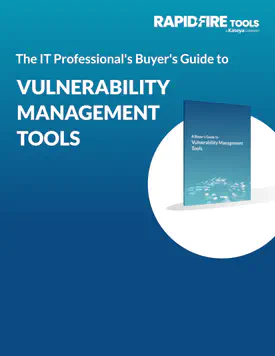Going through the steps of the vulnerability management lifecycle diligently and repeating them regularly dramatically improves the IT security of any of your clients. But most clients are not technical and won’t understand the necessity of the service, nor the benefits, unless you explain it to them. The place to start is to make sure your clients understand the risks of opting out of this service.
 You can start by explaining that all three vectors must overlap for a viable risk to exist:
You can start by explaining that all three vectors must overlap for a viable risk to exist:
- Assets of Value: There must be something of value on the network – including use of the network itself — that represent potential targets of attack.
- Vulnerabilities: There must be weaknesses that could be exploited, such as open ports, unpatched applications, misconfigured network settings, etc.
- Threats: There must be an actual attack, including malware, phishing expeditions, denial of services (DoS) attacks, etc., against a particular vulnerability or weakness.
There is no actual risk without all three of these vectors overlapping.
Click here to get a demo of VulScan and find out how it helps mitigate IT risks for your clients.
